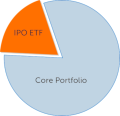After last year’s SPAC boom, 2022 has started off as a bust. Of the 199 companies that went public via SPAC merger in 2021, only 11% trade above the offer price, and the group averages a -43% return. Completed SPAC mergers (de-SPACs) have performed worse than traditional IPOs, even after a recent sell-off in the IPO market. As of March 2022, de-SPACs have generally underperformed across the board, regardless of SPAC size, year, or target sector. Many of the largest de-SPACs show significant losses, such as Grab and Ginkgo Bioworks. Former high-flyers Virgin Galactic and Hyliion trade below issue, and even high-profile winners Lucid and Draftkings have shed 50% or more over the past few months. Meanwhile, SPACs that have not completed mergers once again trade close to the $10 redemption price, a far better trade relative to de-SPACs.
The rapid decline in de-SPAC returns has sent shockwaves through the broader SPAC market. Redemptions have soared, in some cases 99% of the trust, and merger terminations have spiked. Large PIPE investments have evaporated. New deal announcements no longer cause pops. Dozens of sponsors have withdrawn IPO filings rather than lose at-risk capital, while others price offerings with smaller deal sizes, more warrants, and overfunded trusts. The SEC has proposed a new regulatory framework. SPAC liquidations are expected to ramp up over the next two years as hundreds of public SPACs approach expiration. For investors, premerger SPACs can offer a guaranteed modest return via redemption. Bolder investors holding shares into a de-SPAC should demand clear upside from an experienced dealmaker with a proven track record. And on the de-SPAC side, investors may look for bargains.
View our SPAC Market Update![]()
For the full report, sign up for a free 7-day trial of IPO Pro.


